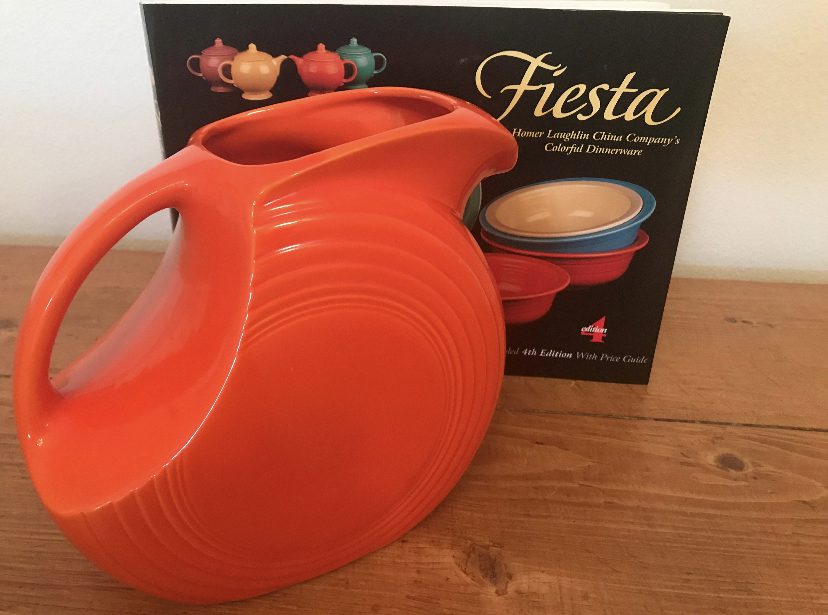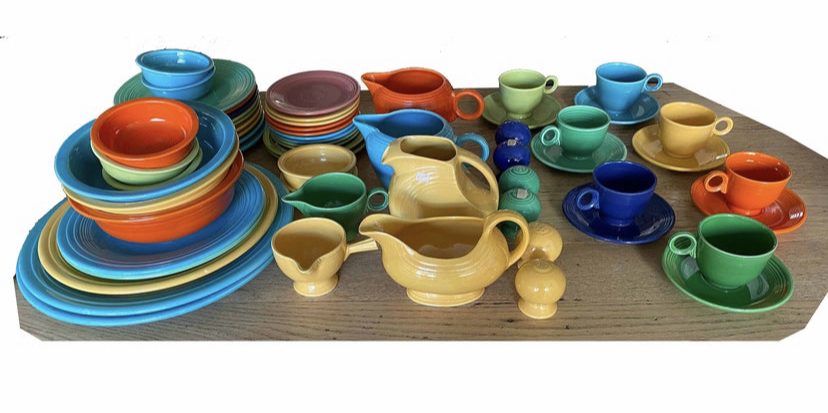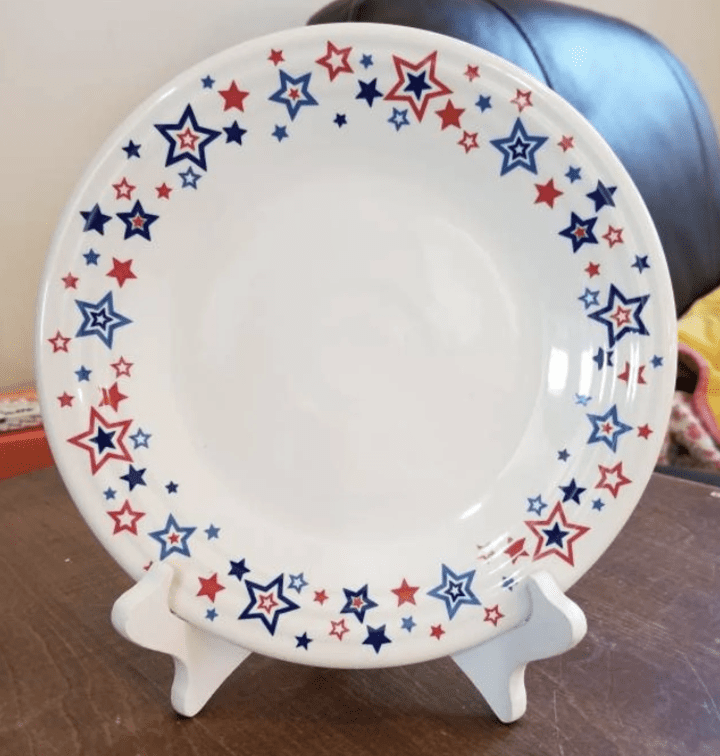Fiestaware is not just a popular collector’s item, it is also a durable dinnerware set. However, if you’re collecting Fiestaware pieces, you might be interested in the history of the brand.
The Homer Laughlin China Works started producing Fiesta dinnerware in 1936, during the Great Depression. All genuine Fiestaware was made in the United States. Original Homer Laughlin china production took place in Steubenville, Ohio; however, in 1902, the company expanded to Newell, West Virginia.
Although Fiestaware is based on Latin culture, it is entirely American-made. In this post, you’ll learn more about the history of Fiestaware.

Homer Laughlin China Works: the Birth of Fiestaware
Because Fiestaware is a division of the Homer Laughlin China Works, it is important to know more about the company’s roots.
The Homer Laughlin China Works was formed in 1871. This company was a partnership between two brothers: Homer and Shakespeare Laughlin. The two brothers didn’t originally produce Fiestaware. In fact, the Liverpool City Council commissioned them to start producing whiteware to increase the sophisticated dinnerware market.
In 1927, a man named Frederick Hurten Rhead was hired by the Homer Laughlin China Works company as their art director. Soon after, Frederick created and released Fiestaware, a colorful American-made china line designed to be mixed and matched. When everything seemed gloomy, Fiestaware dishes brought vibrancy and color back into American homes. People loved mixing the different colors of plates and cups to create a festive dining experience.
These sets also become popular likely for their durability and overall affordability. According to the Fiesta website, the brand continues to handcraft its pieces alongside other manufacturing techniques. For this reason, every Fiestaware piece is slightly different, and therefore one of a kind.

When shopping, you will see pieces labeled with both Fiesta and Fiestaware. While the technical name of the line is Fiesta, consumers have nicknamed it Fiestaware. The company has adopted this nickname and consumer attention.
Although Fiestaware was very popular during the 1940s, the line was discontinued in 1973. The Fiesta brand was reintroduced in 1986 as a collaboration with Bloomingdales.
The Fiesta dinnerware line has continued to draw consumer attention. To keep market attention, Fiesta introduces one new color every year. This marketing strategy is especially successful due to the fact that Fiestaware is most popular for its unique colors. Even if you have all the vintage and modern colors, there will always be new colors to collect.
Where Is Fiestaware Made?
While Homer Laughlin China Works started as a small-town American company, it is not uncommon for companies to outsource production to other companies when they become popular. That said, Homer Laughlin China Works still produces all of their Fiestaware in the United States.
When Homer Laughlin China Works was first organized, they built their kilns in Liverpool, Ohio. After several decades, the company needed to expand. Luckily, a plot of land just across the Ohio River became available. The pottery company expanded as much as Liverpool would allow them to and then purchased the plot of land on the other side of the river. This land was in Newell, West Virginia.
Though the plants were in different states, they were less than a mile away from each other. To connect the two plants, a bridge was built. Fiestaware production was finally capable of producing thousands of pieces a day.

The pottery company is largely attributed with settling both Liverpool and Newell. They were also responsible for creating hundreds of American jobs in the valley, and they will continue to do so. The company’s owners committed to producing their china products in America as a way to give local potters jobs.
Fiesta’s commitment to American pride is perfectly captivated in their Americana Stars set. This set features 9 different dinnerware pieces:
- Luncheon Plate
- Appetizer Plate
- Center Decal Appetizer Plate
- Small Bread Tray
- Tapered Mug
- Small, Medium, and Large Bowl
- Medium Oval Serving Platter

Each of these pieces features red, white, and blue stars. But this isn’t the only homage to America that Fiesta has produced.
When shopping from Macy’s Americana Collection, you can find different Fiestaware plates in red, white, and blue. Combine this with Fiesta’s Americana Stars line for the perfect Independence Day meal.
So long as it is genuine Fiesta, you can trust that your Fiestaware was produced in the United States.
Does Fiestaware Contain Lead?
When purchasing vintage china, one of the main concerns is the amount of lead it contains. Many vintage bone chinas produced in England (and shipped to the United States) contain toxic levels of lead.
Fiestaware is not guilt-free when it comes to lead contaminants. When the Fiesta line was first released, it was not uncommon for pottery glazes to contain both natural and added lead.
As health standards improved, the FDA set regulations for the amount of lead that a dish can safely leach out. Currently, the FDA allows up to 0.5 parts per million of lead in restaurant-grade dishes.
During the Fiesta line’s initial run, there were no industry lead standards. If you own a vintage Fiesta dinnerware set, have each of the pieces tested for lead. You can do this with an at-home test kit.
That said, if your Fiesta pieces were produced in the 1980s and beyond, then you’re better off (lead-wise). When Bloomingdales and Homer Laughlin China Works reintroduced the Fiesta line in 1986, it was considered “lead-free.” In other words, the company didn’t add extra lead to the glaze. However, there could still be naturally occurring lead in some of the glaze products.
While the FDA permits 0.5 parts per million leachable lead, Fiesta dinnerware pieces only contain 0.002 parts per million. That is 50 times less than the amount considered acceptable by California (which has stricter rules than the FDA).
Not only are Fiesta dinnerware pieces lead-free, but they are microwave and oven safe. More so, you can take a Fiestaware dish directly out of the oven and place it immediately into the freezer without risking breaking it. Users have also claimed that Fiestaware is drop-resistant up to three feet. That’s incredible!

